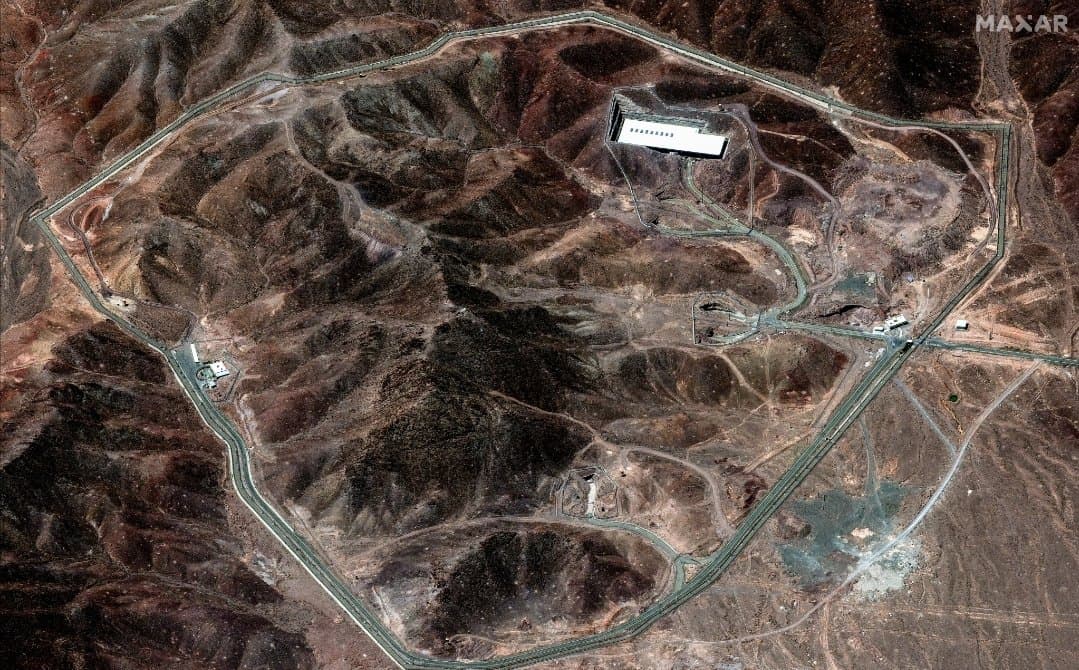Fordow remains a near-invincible target
Israel's Huge Problem: Iran's Nuclear Fortress Fordow Is Pretty Much Indestructible
Despite dominating the skies over Tehran, Israel faces its hardest target yet: a nuclear fortress deep inside a mountain, immune to conventional strikes. The clock is ticking and the options are vanishing.

A series of posts by an X user known as "The Guru" (@daardos) has shed light on the significant strategic challenge posed by Iran’s Fordow nuclear enrichment facility, describing it as an "impregnable fortress" buried 90 meters underground. The detailed thread outlines the facility’s purpose, history, and the limited options available to Israel for addressing the threat it poses.
Located near the village of Fordow, approximately 32 kilometers from the city of Qom and a few hours’ drive from Tehran, the Fordow facility is a key component of Iran’s nuclear program. Unlike the larger Natanz facility, Fordow is smaller but designed specifically for military-grade uranium enrichment. Its strategic placement deep within a mountainside makes it exceptionally difficult to target, posing a unique challenge for any potential military action.
History of Fordow
According to the thread, Iran began secretly constructing the Fordow facility in 2006. Its existence was publicly revealed in September 2009 by the United States, the United Kingdom, and France, prompting Iran to formally report it to the International Atomic Energy Agency (IAEA). By December 2011, Iran had commenced uranium enrichment at the site. The facility’s underground design and advanced security measures prove its role as a critical asset in Iran’s nuclear ambitions.
Military Challenges
The thread emphasizes the near-impenetrable nature of Fordow due to its 90-meter depth beneath a mountain. The only known weapon capable of penetrating such a facility from the air is the GBU-57A/B Massive Ordnance Penetrator (MOP), nicknamed the "Mother of All Bombs." This U.S.-developed bomb can penetrate up to 60 meters of earth or 18 meters of reinforced concrete, with potential to reach deeper in softer rock. However, even this weapon would likely require multiple strikes at the same point to reach Fordow’s depths.
Israel, however, lacks both the GBU-57A/B and the capability to deploy it. The bomb, weighing 13.6 tons and measuring 6 meters in length, can only be carried by U.S. B-2 bombers. Israel’s alternative, the GBU-28 bunker-busting bomb, was reportedly used in operations such as the elimination of Hezbollah leader Hassan Nasrallah, but it is insufficient for targeting a facility as deeply buried as Fordow.
Ground Assault: A High-Risk Option
The thread also explores the possibility of a ground raid, an option reportedly discussed in outlets like Axios. However, such an operation would face significant obstacles. The facility is heavily guarded by Iran’s Revolutionary Guards, both inside and out, with steel gates and doors designed to block entry. Even with Israel’s air superiority, which could neutralize surrounding air defenses and radars, a commando operation—whether by insertion or parachute—would likely face intense resistance and is considered extremely challenging, if not nearly impossible, without significant casualties.
Alternative Measures
With direct military options limited, the thread suggests alternative approaches, such as cutting off electricity, blocking access routes, or sealing ventilation shafts. However, these measures would only temporarily disrupt operations and fall short of destroying the facility. The user underscores that dismantling Fordow is non-negotiable for Israel, given its strategic significance, but current options appear limited.
Speculative Solution
In a speculative proposal, the thread suggests a novel approach: using a Jackal 9000 drill, manufactured by the British company Dando, to bore a 20-centimeter-wide hole 100 meters deep into the mountain above Fordow. The drill, weighing approximately 7.5 tons with its equipment, could theoretically be airlifted to the site after establishing an air corridor. The process, estimated to take around ten hours, would create a conduit for inserting liquid explosives into the facility. While the user acknowledges the idea’s speculative and potentially far-fetched nature, it highlights the creative thinking required to address such a complex challenge.
Strategic Implications
The Fordow facility remains one of the greatest unknowns in Israel’s ongoing strategic considerations regarding Iran’s nuclear program. The thread concludes that Israel may have undisclosed strategies or capabilities, but the public nature of the discussion underscores the urgency and complexity of the issue. As tensions persist in the region, the fortified facility continues to represent a significant hurdle for Israel and its allies in addressing Iran’s nuclear ambitions.